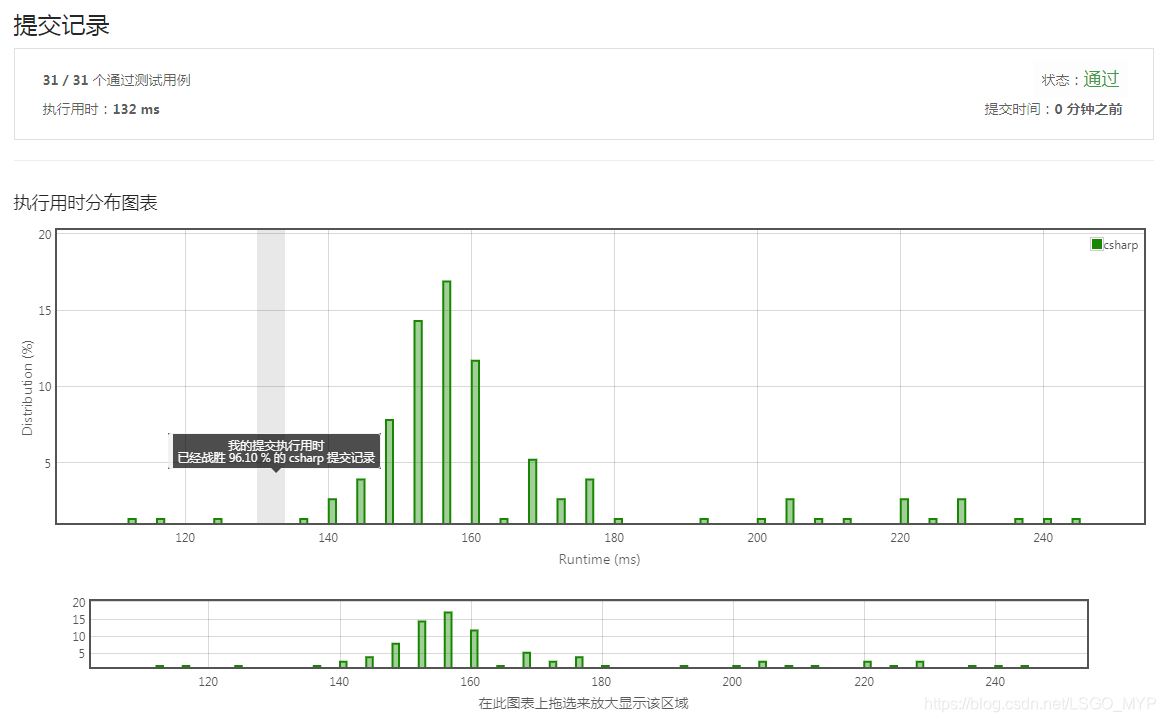背景
题目英文
Given a binary tree, find the lowest common ancestor (LCA) of two given nodes in the tree.
According to the definition of LCA on Wikipedia: “The lowest common ancestor is defined between two nodes p and q as the lowest node in T that has both p and q as descendants (where we allow a node to be a descendant of itself).”
Given the following binary tree: root = [3,5,1,6,2,0,8,null,null,7,4]

Example 1:
Input: root = [3,5,1,6,2,0,8,null,null,7,4], p = 5, q = 1
Output: 3
Explanation: The LCA of nodes 5 and 1 is 3.
Example 2:
Input: root = [3,5,1,6,2,0,8,null,null,7,4], p = 5, q = 4
Output: 5
Explanation: The LCA of nodes 5 and 4 is 5, since a node can be a descendant of itself according to the LCA definition.
Note:
- All of the nodes’ values will be unique.
- p and q are different and both values will exist in the binary tree.
题目中文
给定一个二叉树, 找到该树中两个指定节点的最近公共祖先。
百度百科中最近公共祖先的定义为:“对于有根树 T 的两个结点 p、q,最近公共祖先表示为一个结点 x,满足 x 是 p、q 的祖先且 x 的深度尽可能大(一个节点也可以是它自己的祖先)。”
例如,给定如下二叉树: root = [3,5,1,6,2,0,8,null,null,7,4]

示例 1:
输入: root = [3,5,1,6,2,0,8,null,null,7,4], p = 5, q = 1
输出: 3
解释: 节点 5 和节点 1 的最近公共祖先是节点 3。
示例 2:
输入: root = [3,5,1,6,2,0,8,null,null,7,4], p = 5, q = 4
输出: 5
解释: 节点 5 和节点 4 的最近公共祖先是节点 5。因为根据定义最近公共祖先节点可以为节点本身。
说明:
- 所有节点的值都是唯一的。
- p、q 为不同节点且均存在于给定的二叉树中。
算法实现
/**
* Definition for a binary tree node.
* public class TreeNode {
* public int val;
* public TreeNode left;
* public TreeNode right;
* public TreeNode(int x) { val = x; }
* }
*/
public class Solution
{
public TreeNode LowestCommonAncestor(TreeNode root, TreeNode p, TreeNode q)
{
return Find(root, p, q);
}
private TreeNode Find(TreeNode current, TreeNode p, TreeNode q)
{
if (current == null || current == p || current == q)
return current;
TreeNode left = Find(current.left, p, q);
TreeNode right = Find(current.right, p, q);
if (left != null && right != null)
return current;
return left != null ? left : right;
}
}
实验结果
- 状态:通过
- 31 / 31 个通过测试用例
- 执行用时: 132 ms, 在所有 C# 提交中击败了 96.10% 的用户
- 内存消耗: 27.5 MB, 在所有 C# 提交中击败了 20.00% 的用户

相关图文
1. “数组”类算法
- LeetCode实战:三数之和
- LeetCode实战:最接近的三数之和
- LeetCode实战:求众数
- LeetCode实战:缺失的第一个正数
- LeetCode实战:快乐数
- LeetCode实战:寻找两个有序数组的中位数
- LeetCode实战:盛最多水的容器
- LeetCode实战:删除排序数组中的重复项
- LeetCode实战:搜索旋转排序数组
- LeetCode实战:螺旋矩阵
- LeetCode实战:螺旋矩阵 II
- LeetCode实战:买卖股票的最佳时机
- LeetCode实战:买卖股票的最佳时机 II
2. “链表”类算法
3. “栈”类算法
4. “队列”类算法
5. “递归”类算法
6. “位运算”类算法
7. “字符串”类算法
8. “树”类算法
9. “哈希”类算法
10. “排序”类算法
11. “搜索”类算法
12. “动态规划”类算法
13. “回溯”类算法
14. “数值分析”类算法
